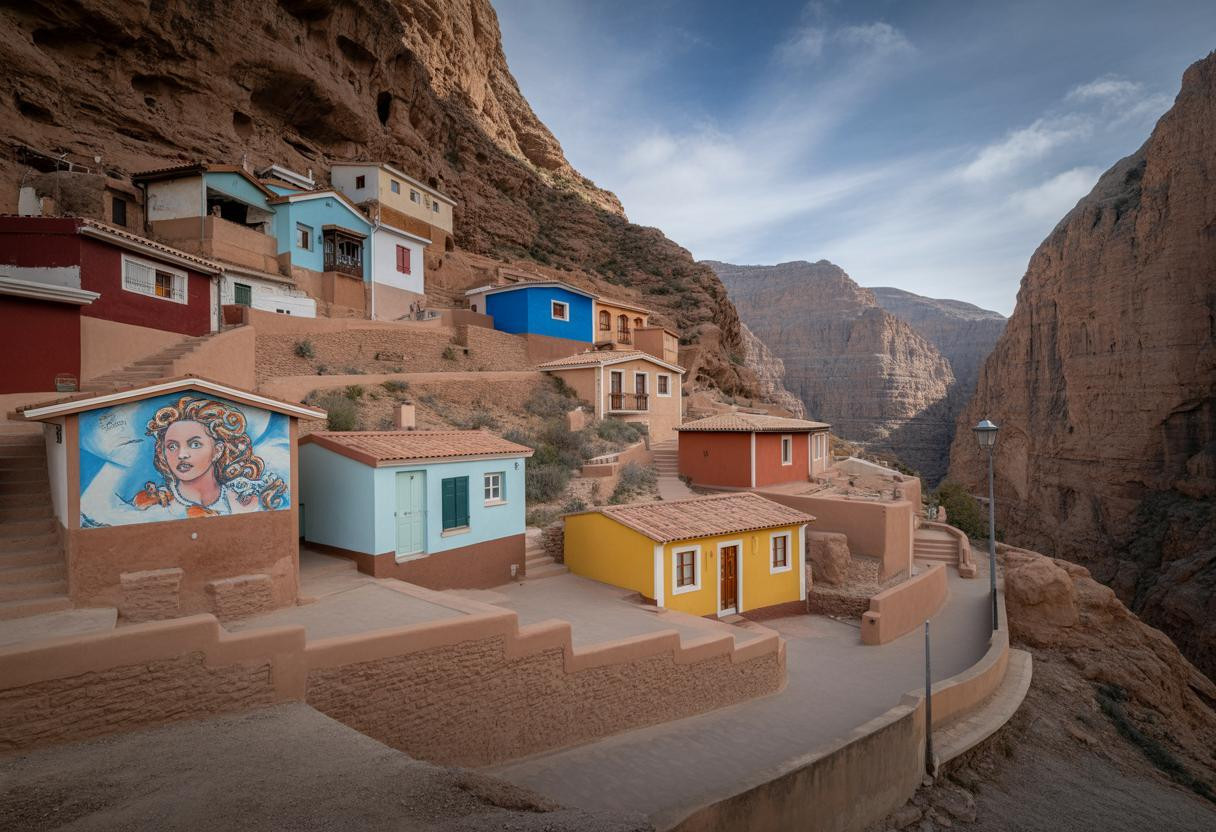Most people assume abandoned mining towns become ghost towns, but Bisbee, Arizona defied this pattern through strategic cultural reinvention that transformed economic devastation into artistic prosperity. This small mountain community offers a fascinating case study in how industrial heritage can become the foundation for sustainable tourism and cultural renaissance.
From copper empire to creative haven
Bisbee’s transformation began with catastrophic decline. Once Arizona’s largest city with over 25,000 residents in 1917, the town’s population plummeted to just 3,800 by 1950 when copper mining ceased. The 1917 Bisbee Deportation had already weakened labor movements, and by 1975, depleted ore reserves forced the closure of all mines, including the iconic Lavender Pit.
However, this economic collapse created an unexpected opportunity. Real estate prices crashed dramatically, attracting hippies, retirees, and artists seeking affordable housing in the 1980s. Unlike typical ghost towns, Bisbee’s unique canyon terrain and preserved mining infrastructure provided the perfect canvas for creative communities.
The Queen Mine Tour, launched in 1976, marked the beginning of heritage tourism by repurposing underground tunnels for educational experiences. This attracted over one million visitors and demonstrated how creating more personal and authentic living spaces could extend to entire communities.
The economics of artistic transformation
Bisbee’s population has rebounded to approximately 7,000 residents, with over 200 active artists now calling it home. The Artemizia Foundation, established in 2019, formalized the town’s artistic identity through a graffiti and street art museum that draws national attention.
This demographic shift created a new economic model. Tourism revenue replaced mining income, but the transition wasn’t without challenges. Like many rural areas experiencing gentrification, longtime residents face housing affordability pressures as property values rise with increased demand.
Infrastructure becomes attraction
Bisbee’s steep canyon streets and multi-tiered housing, originally designed for miners, now serve as unique tourist attractions. The town’s commitment to preserving its “no stoplights” character reflects resistance to over-development that could compromise its authentic appeal.
However, these same features create accessibility challenges for aging populations and tourists navigating steep terrain. The elevation changes that once accommodated mining operations now require careful planning for visitor safety.
Environmental legacy and modern sustainability
Bisbee’s mining past left environmental scars including deforestation and erosion. While current green initiatives aren’t extensively documented, the town faces typical challenges of environmental contamination affecting communities long-term from its industrial heritage.
The water and energy demands of sustained tourism in an arid region require careful management. Sustainable tourism practices become essential for maintaining the delicate balance between economic vitality and environmental protection.
Lessons for other struggling communities
Bisbee’s success stems from three key factors: preserved historic infrastructure, affordable entry points for creatives, and geographic uniqueness. However, replicating this model requires existing architectural character and community willingness to embrace change.
The town’s story demonstrates that the subtle details that distinguish authentic quality from superficial appearances apply equally to community development. Genuine cultural transformation differs significantly from manufactured tourist attractions.
Future challenges and opportunities
Bisbee faces the classic tourism dilemma: balancing preservation with accommodation. Over-reliance on seasonal tourism creates economic vulnerability, while overtourism could destroy the intimate character that makes the town special.
The key to sustained success lies in diversifying beyond arts and tourism while maintaining the community’s eccentric identity. Year-round programming, artist residencies, and community-led development can help ensure longtime residents benefit from, rather than suffer from, Bisbee’s transformation.
Bisbee proves that industrial decline doesn’t have to mean community death. With creative vision and strategic preservation, former mining towns can forge new identities that honor their past while building sustainable futures. The real lesson isn’t just about saving buildings—it’s about creating authentic communities that attract people seeking genuine experiences over manufactured attractions.
